Allegedly obvious notions like "blando"and "duro" to describe 2 types of watermark???? Nothing about the Sun or the A not touching the Я? Oh, yes the sun is round!? At least it is supposed to be imported paper ...... and the "blando" has an orthogonal watermark - "con el eje mayor perpendicular al renglón de RA."
EL DESAFÍO DE LOS PAPELES CON FILIGRANA SOL RA EN LA FILATELIA ARGENTINA
Apuntes para su estudio Autor: Darío A. Bardi
Sexta Parte:
Papeles Mates Importados “duros” y “blandos”
......................................
DESCRIPCIÓN
Para aprender a diferenciarlos podemos tomar ejemplos de sellos conmemorativos emitidos en una sola variante. Así el 658 solo apareció en mate duro, mientras el 715 solo lo fue en mate blando. Si observamos estos sellos del lado de la goma veremos que el 658 presenta una tonalidad blanquecina ligeramente gris-amarillenta, el sol es redondo y la filigrana es nítida y visible a simple vista. También observamos que el papel es consistente, de ahí lo de “duro”.
El 715 en cambio, presenta un papel de tipo “blando”, baboso podríamos decir, y del lado de la goma se lo ve de una tonalidad blanco- tiza con una textura del tipo de la arena muy fina. La filigrana no se ve o se ve muy poco a simple vista y el sol es ligeramente ovalado, con el eje mayor perpendicular al renglón de RA. Además de esta somera descripción que solo remarca los aspectos prácticos que el suscripto utiliza para diferenciar ambos papeles, existe otra cuestión que es definitoria para cuando en un mismo sello se dan las dos variantes: la posición del renglón de RA es distinta. Es decir, si por ejemplo en el mate “blando” es horizontal, en el mate “duro” es vertical y viceversa.
Es fundamental tener en cuenta esta característica, porque suele haber sellos mates “blandos” con una goma de tonalidad amarillenta (por las condiciones en que fue preservado) y filigrana algo visible, que se los intenta vender como mates “duros” porque son los más escasos y luego más caros, con el consecuente perjuicio para el incauto comprador. Por lo dicho, nada mejor que conocer la posición del RA del mate blando y la del mate duro, para lo cual a continuación incluimos una tabla que contiene todos los sellos conocidos hasta hoy por el suscripto, donde se dan ambas variantes. Para interpretarla debemos saber que la V indica la posición del renglón de RA en vertical y la H en horizontal.

Hawks and softies
Moderador: Rein
- Rein
- Usuario Colaborador

- Mensajes: 6258
- Registrado: 13 Mar 2009 15:59
- Ubicación: Leiden, Netherlands
- Contactar:
Hawks and softies
- Rein
- Usuario Colaborador

- Mensajes: 6258
- Registrado: 13 Mar 2009 15:59
- Ubicación: Leiden, Netherlands
- Contactar:
Re: Hawks and softies
Philatelists love to coin new terms when they come across phenomenons within a particular setting, a particular series and then invent new notations, new terms NOT REALIZING that what they have just seen is nothing new but had been present in previous series and had been named by other specialist [of that particular series!] differently!
Naming just the types of watermark for the PyR I series is strange when you realize that the same types of papers had been used a lot earlier for the 1923 JSM series [among others!]
Calling a type of paper "mate importado" and distinguishing "blando" and "duro" does NOT help when you do not give the necessary parameters. In this case - rather all cases with the Sun + Multiple AЯ watermark - it is absolutely necessary to know whether we are dealing with a parallel watermark or an orthogonal watermark!
Meanwhile the coined terms found their way into the literature and catalogues and NO ONE dares to touch that again! So we are stuck with sometimes 60 year old terms and whoever wants to change the nomenclature is a HERETIC of the sacred word....
When "duro" stands for imported paper with a parallel watermark and "blando" for orthogonal watermark it would be good to have a closer look - first at the commemoratives and then at the definitives. In that order as we have usually no idea anymore when a certain definitive item had been issued.... and the dates of issue are well known in the case of commemoratives.
Naming just the types of watermark for the PyR I series is strange when you realize that the same types of papers had been used a lot earlier for the 1923 JSM series [among others!]
Calling a type of paper "mate importado" and distinguishing "blando" and "duro" does NOT help when you do not give the necessary parameters. In this case - rather all cases with the Sun + Multiple AЯ watermark - it is absolutely necessary to know whether we are dealing with a parallel watermark or an orthogonal watermark!
Meanwhile the coined terms found their way into the literature and catalogues and NO ONE dares to touch that again! So we are stuck with sometimes 60 year old terms and whoever wants to change the nomenclature is a HERETIC of the sacred word....
When "duro" stands for imported paper with a parallel watermark and "blando" for orthogonal watermark it would be good to have a closer look - first at the commemoratives and then at the definitives. In that order as we have usually no idea anymore when a certain definitive item had been issued.... and the dates of issue are well known in the case of commemoratives.
- Rein
- Usuario Colaborador

- Mensajes: 6258
- Registrado: 13 Mar 2009 15:59
- Ubicación: Leiden, Netherlands
- Contactar:
Re: Hawks and softies
After the Second World War the imported papers without coating [mate importado] not counting the Rayos Rectos were only 2:
- a parallel watermark with asymmetrical paper mesh = rayado vertical = MII5 (Bardi) = 1L1 [Rubiera]
- a orthogonal watermark with asymmetrical paper mesh = rayado horizontal = MII6 (Bardi) = 1L2 [Rubiera]
The definitives with these papers are in the PyR I series and most of them can be found in the Bardi book.
Furthermore the 50c and 1p Airmail [MI6 only], the small size Evita's (except for the 45c) [MI5 only].
For the commemoratives we find:
1955 21.03 Productivity in photogravure with parallel watermark
1955 31.12 Armed Forces in photogravure with parallel watermark
1956 03.02 Caseros in photogravure with parallel watermark
1956 01.09 New provinces in photogravure with parallel watermark
Then as left-overs - and pretty scarce as small part of the printings:
1960 06.02 Pro Infancia 2p in offset-litho with parallel watermark
In 1961 however, we start regularly getting the parallel watermark again! Not likely to be left-overs but freshly ordered! From where???? Is this a new, different type of paper???? And it is with this paper we are getting confused and start using the "blando" and "duro" terms????
Whatever the origin of the papers, we have to establish the type of watermark - parallel or orthogonal!
And STOP using this blando and duro NON-SENSE as long as we do not know what we are talking about.
rc2122
- a parallel watermark with asymmetrical paper mesh = rayado vertical = MII5 (Bardi) = 1L1 [Rubiera]
- a orthogonal watermark with asymmetrical paper mesh = rayado horizontal = MII6 (Bardi) = 1L2 [Rubiera]
The definitives with these papers are in the PyR I series and most of them can be found in the Bardi book.
Furthermore the 50c and 1p Airmail [MI6 only], the small size Evita's (except for the 45c) [MI5 only].
For the commemoratives we find:
1955 21.03 Productivity in photogravure with parallel watermark
1955 31.12 Armed Forces in photogravure with parallel watermark
1956 03.02 Caseros in photogravure with parallel watermark
1956 01.09 New provinces in photogravure with parallel watermark
Then as left-overs - and pretty scarce as small part of the printings:
1960 06.02 Pro Infancia 2p in offset-litho with parallel watermark
In 1961 however, we start regularly getting the parallel watermark again! Not likely to be left-overs but freshly ordered! From where???? Is this a new, different type of paper???? And it is with this paper we are getting confused and start using the "blando" and "duro" terms????
Whatever the origin of the papers, we have to establish the type of watermark - parallel or orthogonal!
And STOP using this blando and duro NON-SENSE as long as we do not know what we are talking about.
rc2122
- Rein
- Usuario Colaborador

- Mensajes: 6258
- Registrado: 13 Mar 2009 15:59
- Ubicación: Leiden, Netherlands
- Contactar:
Re: Hawks and softies
The parallel watermarks in paper without coating after 1960:
1961 13.05 Rabindranath Tagore offset-litho + photogravure
1961 19.08 Ciudade de Jujuy offset-litho
1961 25.11 Urbanistics offset-litho
1962 14.04 Malaria offset-litho
1962 14.07 UNESCO offset-litho
1964 23.12 Pro Infancia offset-litho
1965 24.07 H. Yrigoyen offset-litho
1965 29.07 Mental health offset-litho + photogravure
1965 07.08 Tucuman offset-litho
1965 21.08 Cagliero photogravure
1965 25.09 Chubut offset-litho *
These are the candidates for "duro"!
1961 13.05 Rabindranath Tagore offset-litho + photogravure
1961 19.08 Ciudade de Jujuy offset-litho
1961 25.11 Urbanistics offset-litho
1962 14.04 Malaria offset-litho
1962 14.07 UNESCO offset-litho
1964 23.12 Pro Infancia offset-litho
1965 24.07 H. Yrigoyen offset-litho
1965 29.07 Mental health offset-litho + photogravure
1965 07.08 Tucuman offset-litho
1965 21.08 Cagliero photogravure
1965 25.09 Chubut offset-litho *
These are the candidates for "duro"!
- Rein
- Usuario Colaborador

- Mensajes: 6258
- Registrado: 13 Mar 2009 15:59
- Ubicación: Leiden, Netherlands
- Contactar:
Re: Hawks and softies
Of the above list two stamps have the SAME WATERMARK! A parallel watermark, with asymmetrical paper mesh, imported paper:
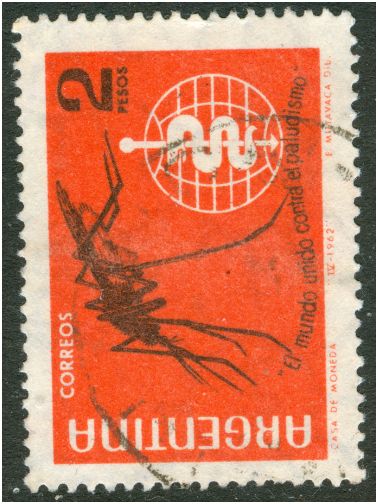
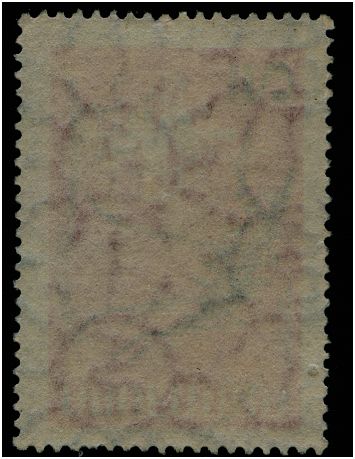
The Malaria stamp only exists in "duro" paper
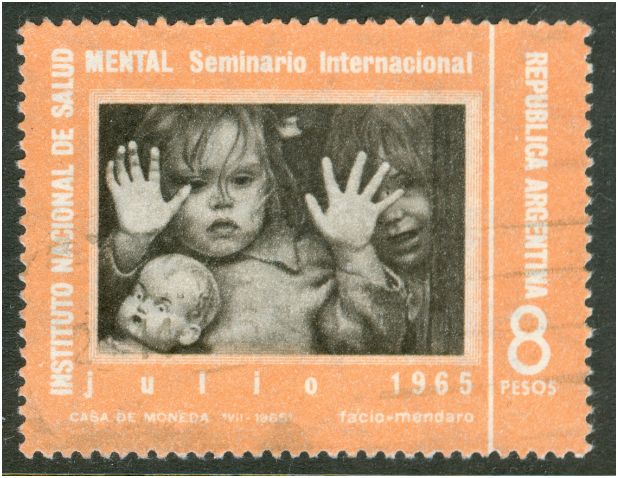
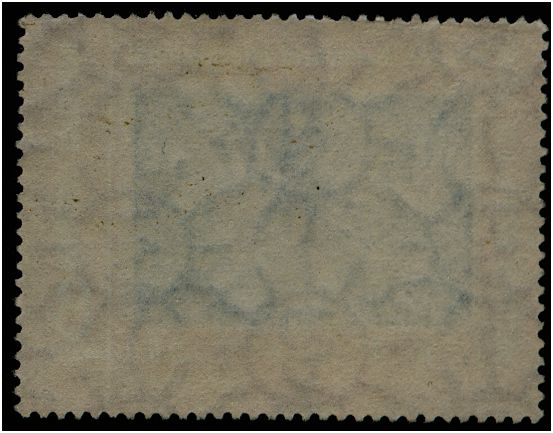
the Mental Health stamp only exists in "blando""
Someone must have been confused by the terms...


The Malaria stamp only exists in "duro" paper


the Mental Health stamp only exists in "blando""
Someone must have been confused by the terms...
- Rein
- Usuario Colaborador

- Mensajes: 6258
- Registrado: 13 Mar 2009 15:59
- Ubicación: Leiden, Netherlands
- Contactar:
Re: Hawks and softies
Let's take a definitive from that period, the 50p José de San Martin in photogravure, featuring in the above Bardi list:
The 1965 50p José de San Martin in photogravure can be found in the catalogues [GJ'09] with 3 types of paper:
- satinado nacional
- mate importado blando
- mate importado duro
The first type of paper is coated with an orthogonal watermark and made in Zárate, but this is not the paper I am interested in now. BTW, it is not just 1 type of paper - we 4 types! The uncoated papers are supposed to be all imported - mate importado - and judging by the catalogue prices not so easy to find!
We find them both! A clearly parallel watermark! Line of AЯ horizontal => duro according to the Bardi list [720a]
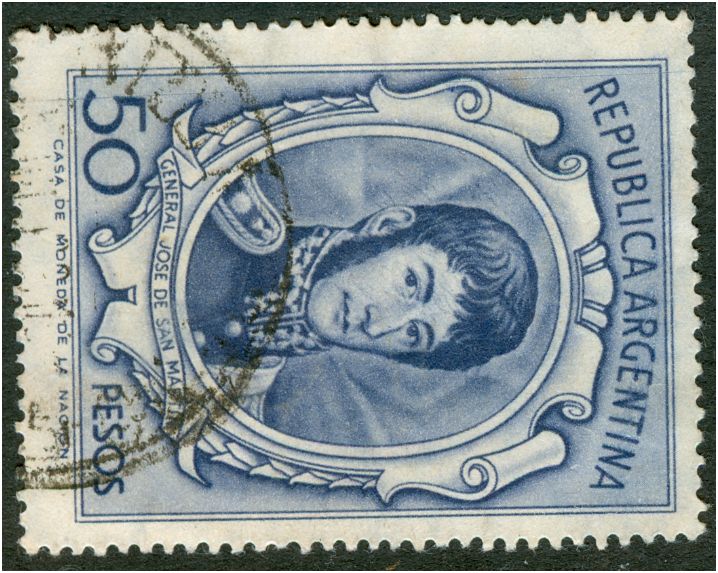
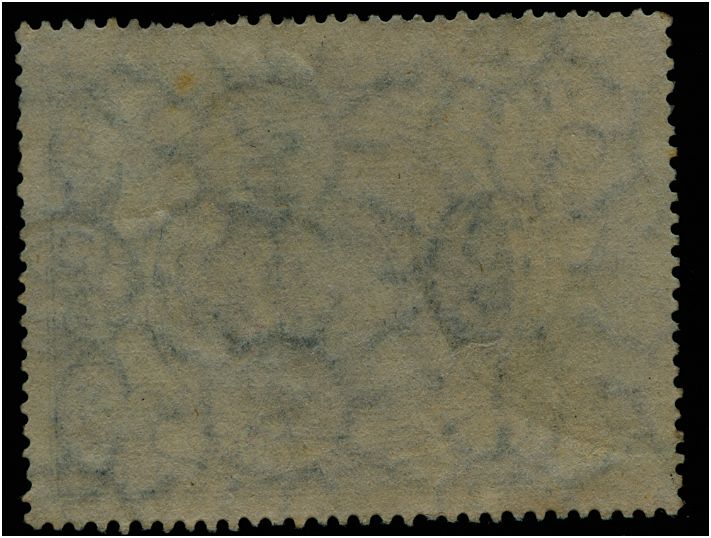
A clearly orthogonal watermark! Line of AЯ vertical => blando according ot the Bardi list [720a]
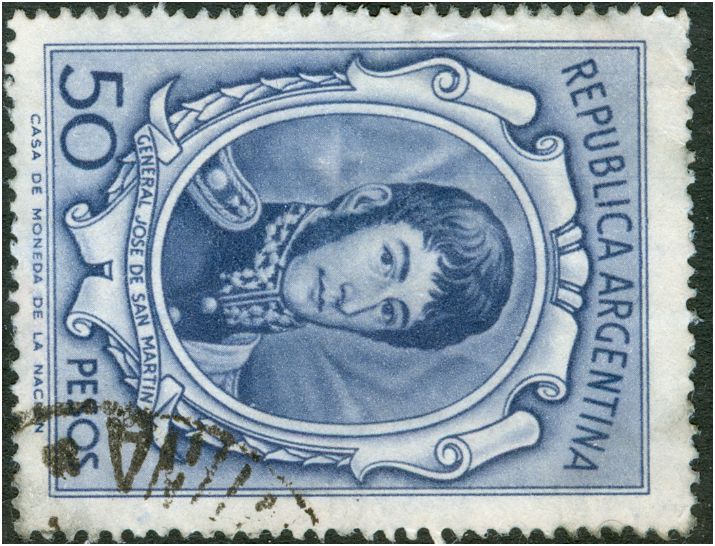
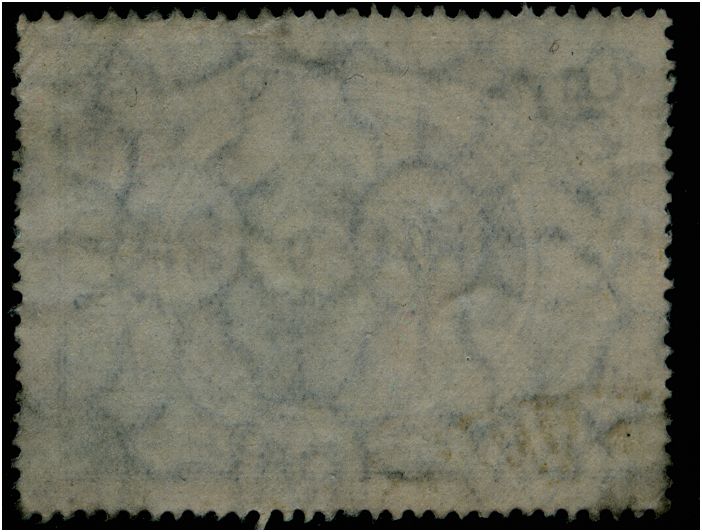
But are we certain that the last stamp is on imported paper????
The 1965 50p José de San Martin in photogravure can be found in the catalogues [GJ'09] with 3 types of paper:
- satinado nacional
- mate importado blando
- mate importado duro
The first type of paper is coated with an orthogonal watermark and made in Zárate, but this is not the paper I am interested in now. BTW, it is not just 1 type of paper - we 4 types! The uncoated papers are supposed to be all imported - mate importado - and judging by the catalogue prices not so easy to find!
We find them both! A clearly parallel watermark! Line of AЯ horizontal => duro according to the Bardi list [720a]


A clearly orthogonal watermark! Line of AЯ vertical => blando according ot the Bardi list [720a]


But are we certain that the last stamp is on imported paper????
- Rein
- Usuario Colaborador

- Mensajes: 6258
- Registrado: 13 Mar 2009 15:59
- Ubicación: Leiden, Netherlands
- Contactar:
Re: Hawks and softies
The 1965 Chubut exists on 2 types of paper - at the left the orthogonal version and at the right the paralle one:
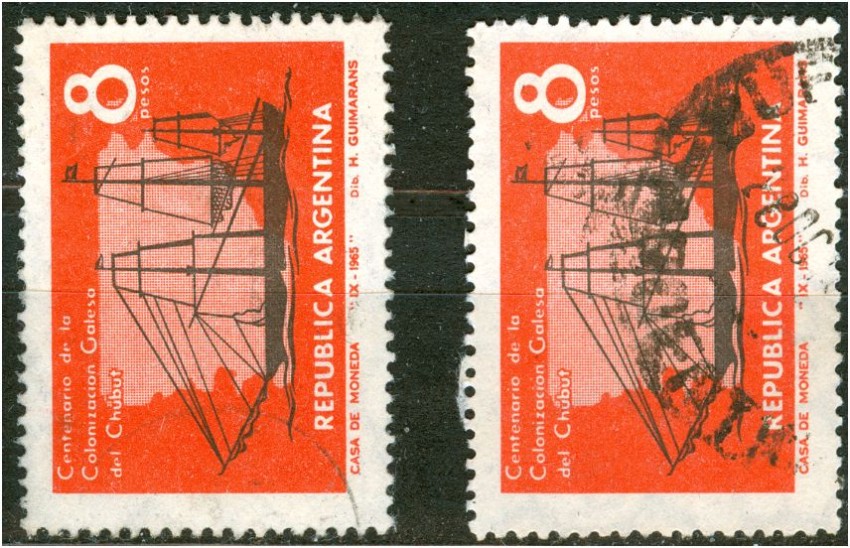
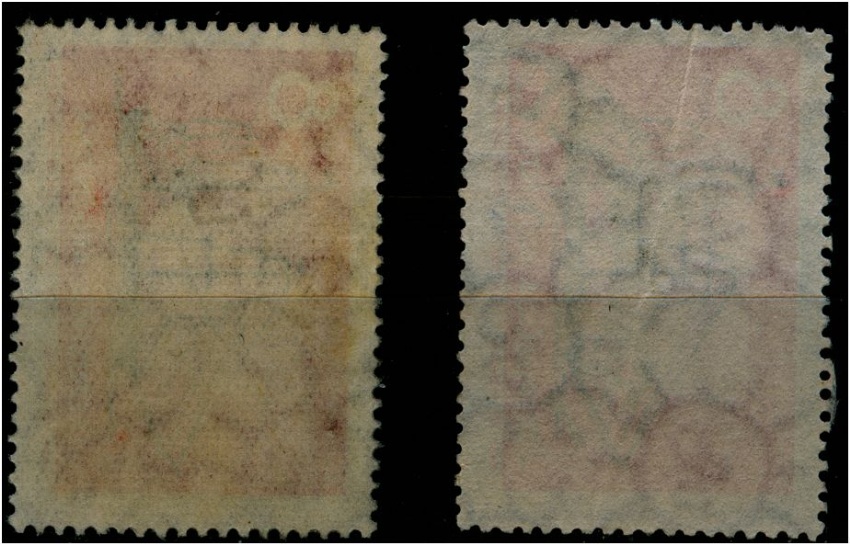
The orthogonal Chubut has - just as the 50p JSM - a symmetrical paper mesh, which - if it is imported - makes it a completely new type of paper similar to the ones we had in 1938-1940: granulado vertical!
rc2126


The orthogonal Chubut has - just as the 50p JSM - a symmetrical paper mesh, which - if it is imported - makes it a completely new type of paper similar to the ones we had in 1938-1940: granulado vertical!
rc2126
- Rein
- Usuario Colaborador

- Mensajes: 6258
- Registrado: 13 Mar 2009 15:59
- Ubicación: Leiden, Netherlands
- Contactar:
Re: Hawks and softies
[quote="Yacare""]
Si a alguien le interesa, le paso la nota completa de la Revista de Pefimar (Peña Filat. Mar del Plata) sobre papeles de JOSE M. RENDO, esta es una página de muestra:
Yacare
[/quote]
In this interesting article J.M. Rendo is defending the separate status of the so-called papel alisado or papel baboso. According to him it got wrongly described as papel mate importado [or once by Klass as papel alisado in 1970].
It is certainly a type of paper without coating! The term mate seems adequate! But what he does not mention is whether this type of paper is imported or not!?
He does not mention the peculiar breaking of the gum which is oh so different from the national paper in that period!
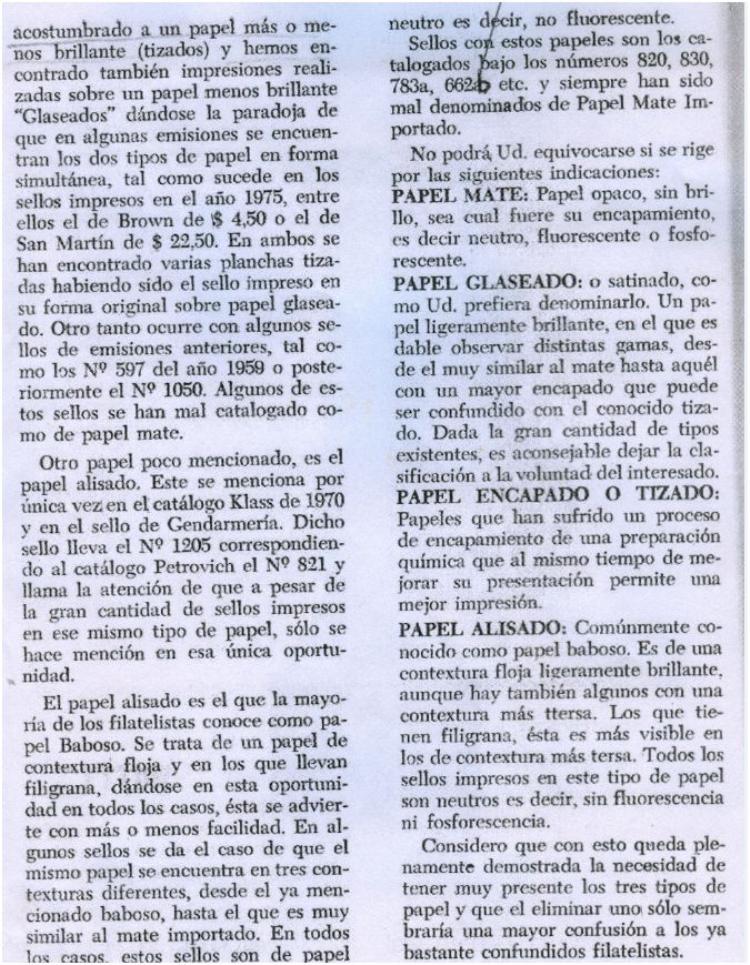
Si a alguien le interesa, le paso la nota completa de la Revista de Pefimar (Peña Filat. Mar del Plata) sobre papeles de JOSE M. RENDO, esta es una página de muestra:
Yacare
[/quote]
In this interesting article J.M. Rendo is defending the separate status of the so-called papel alisado or papel baboso. According to him it got wrongly described as papel mate importado [or once by Klass as papel alisado in 1970].
It is certainly a type of paper without coating! The term mate seems adequate! But what he does not mention is whether this type of paper is imported or not!?
He does not mention the peculiar breaking of the gum which is oh so different from the national paper in that period!

- Rein
- Usuario Colaborador

- Mensajes: 6258
- Registrado: 13 Mar 2009 15:59
- Ubicación: Leiden, Netherlands
- Contactar:
Re: Hawks and softies
Imported uncoated paper [matt] that may be the "alisado" and also happens to have an orthogonal watermark:
1965 06.11 Ley 1420 offset-litho
1965 08.12 Esquiu offset-litho
1966 29.01 Painters photogravure
1966 10.02 Rockets offset-litho
1966 26.03 Pro Infancia offset-litho
1966 29.10 Army Conference offset-litho
1967 14.01 Pro Infancia offset-litho ??
1968 27.07 Dumas offset-litho
1968 26.10 Gendarnerie offset-litho
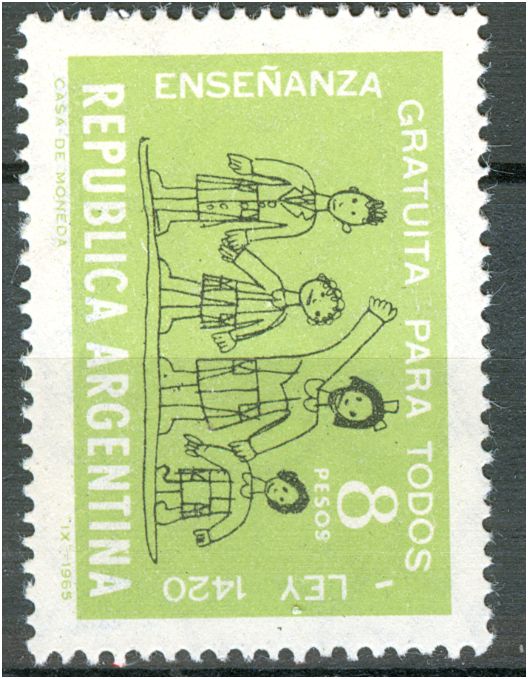
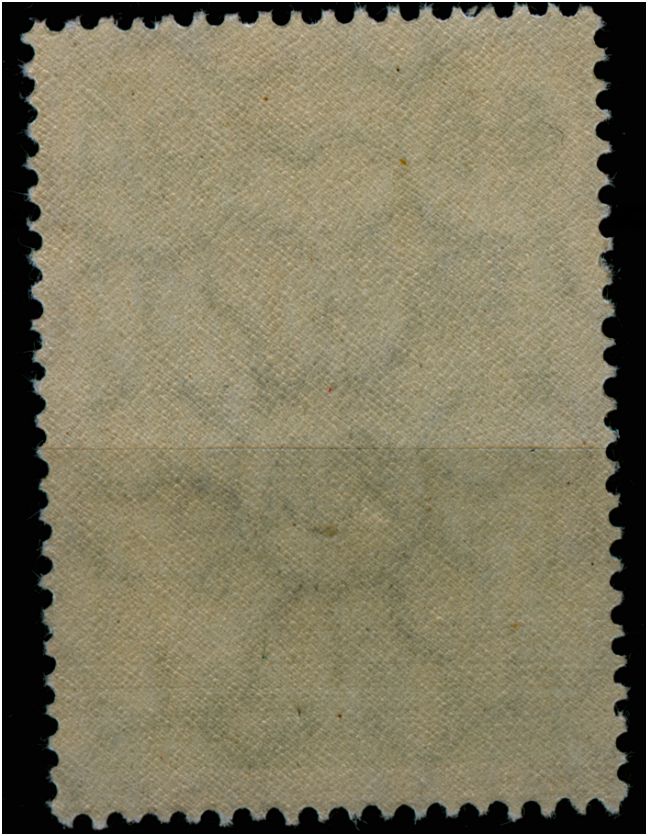

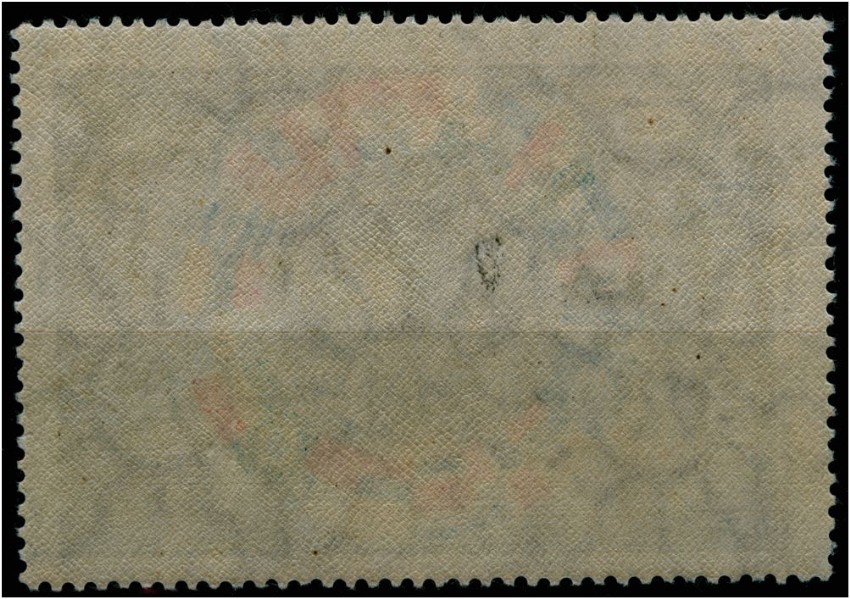
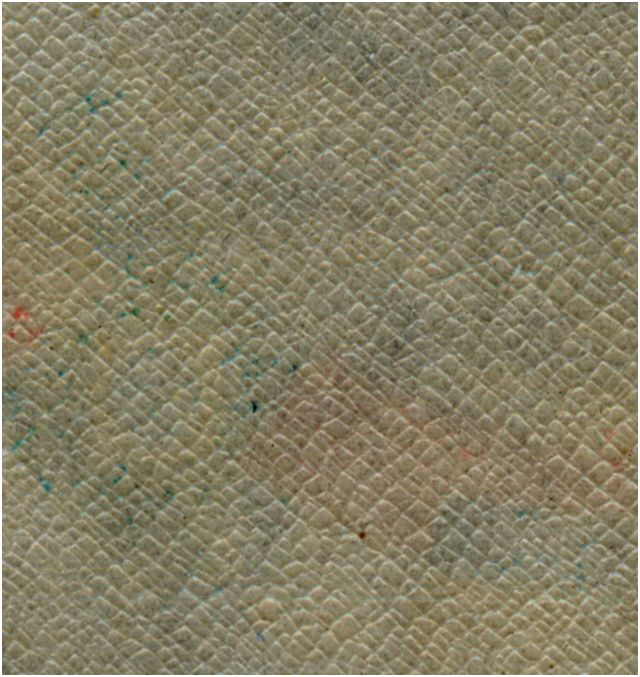
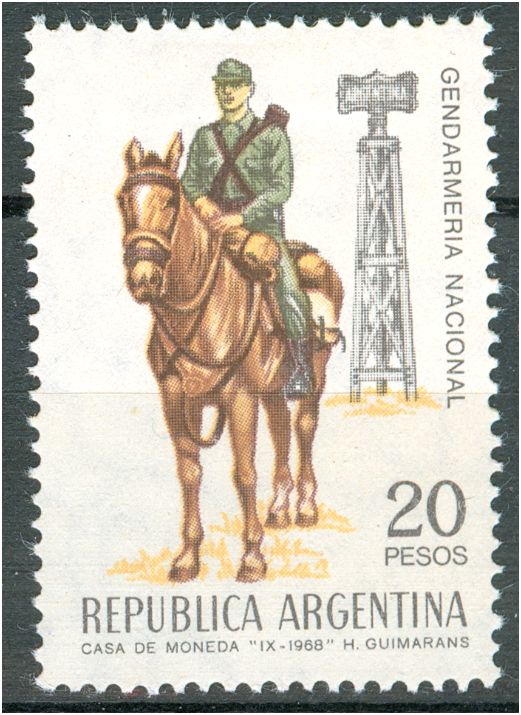
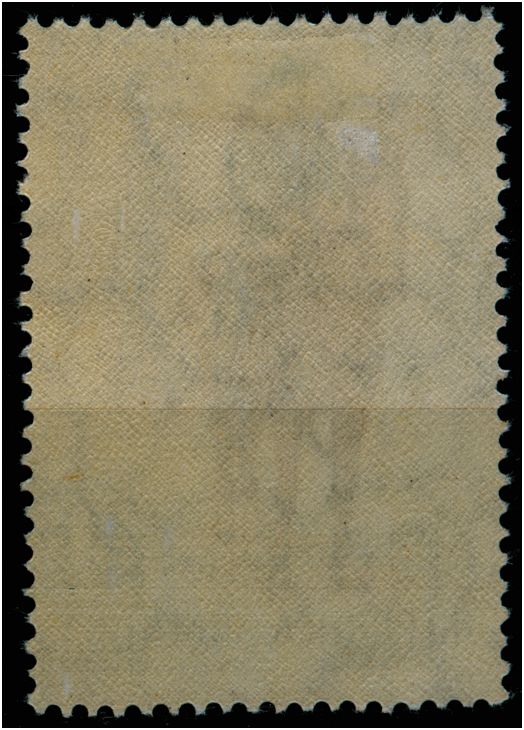
1965 06.11 Ley 1420 offset-litho
1965 08.12 Esquiu offset-litho
1966 29.01 Painters photogravure
1966 10.02 Rockets offset-litho
1966 26.03 Pro Infancia offset-litho
1966 29.10 Army Conference offset-litho
1967 14.01 Pro Infancia offset-litho ??
1968 27.07 Dumas offset-litho
1968 26.10 Gendarnerie offset-litho







- Rein
- Usuario Colaborador

- Mensajes: 6258
- Registrado: 13 Mar 2009 15:59
- Ubicación: Leiden, Netherlands
- Contactar:
Re: Hawks and softies


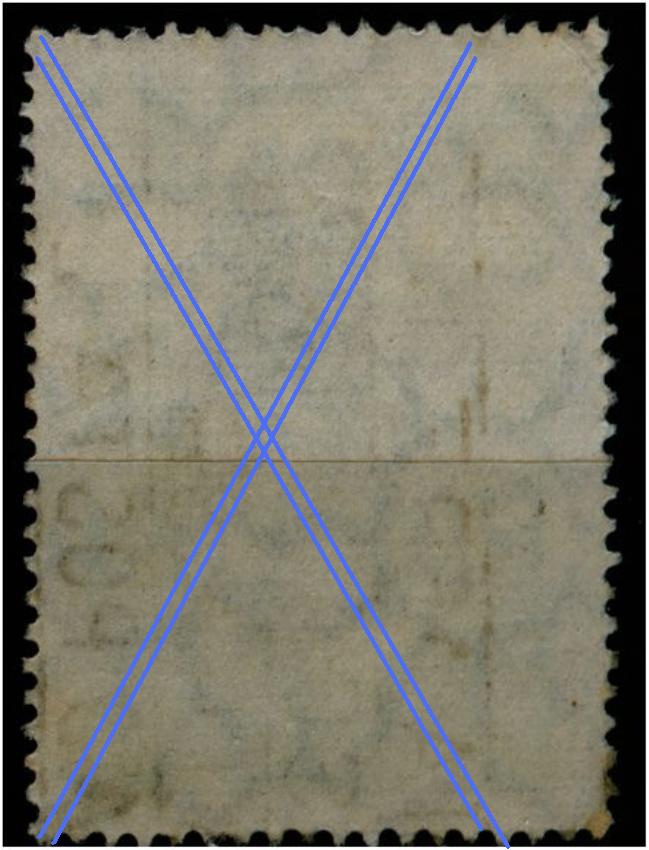
Orthogonal watermark with a symmetrical paper mesh - see the blue lines - and a horizontal direction of paper.
- Rein
- Usuario Colaborador

- Mensajes: 6258
- Registrado: 13 Mar 2009 15:59
- Ubicación: Leiden, Netherlands
- Contactar:
Re: Hawks and softies
Having made a quick survey of my mint stamps - i.e. stamps with gum arabic - I could find the following:
all stamps since 1935 have the typical double diagonal gum breaking:

with the exception of all papers without watermark AND all so-called Zárate papers of 1953-1970;
the pattern may vary a bit - a rather rough pattern or a very delicate (R.R. nitidos) - it is obvious that the national papers do NOT have the pattern!!!!
So to me, the "alisado" as mentioned by mr Rendo are ALL imported and have have an orthogonal watermark combined with an symmetrical paper mesh! AND this "alisado" is the SAME type of paper referred to as "mate importado blando"!!
rc2130
all stamps since 1935 have the typical double diagonal gum breaking:

with the exception of all papers without watermark AND all so-called Zárate papers of 1953-1970;
the pattern may vary a bit - a rather rough pattern or a very delicate (R.R. nitidos) - it is obvious that the national papers do NOT have the pattern!!!!
So to me, the "alisado" as mentioned by mr Rendo are ALL imported and have have an orthogonal watermark combined with an symmetrical paper mesh! AND this "alisado" is the SAME type of paper referred to as "mate importado blando"!!
rc2130
- Rein
- Usuario Colaborador

- Mensajes: 6258
- Registrado: 13 Mar 2009 15:59
- Ubicación: Leiden, Netherlands
- Contactar:
Re: Hawks and softies
Thanks Juan,Juampiweb » 01 Jul 2010 15:17 escribió:
Excelente tema que posteas.
A mi particularmente es una de las cosas que más me cuestan distinguir , pero tratamos de afinar el ojo cáda vez más.
Aunque muchas veces estos temas cuestan por falta de información, con lo cual tendríamos resuelto la mitad del camino.
Muchas gracias.
this theme or discussion held about half a year ago, has been cleared much thanks to the contribution of José Merlo, who disclosed the source of the "blando" paper. The manufacturer was L. Kupferschmidt and the firm was located in the former West Germany.
to be continued ....
- Rein
- Usuario Colaborador

- Mensajes: 6258
- Registrado: 13 Mar 2009 15:59
- Ubicación: Leiden, Netherlands
- Contactar:
Re: Hawks and softies
The definitives printed on this Kupferschmidt paper are just a few!
Whereas the mate importado duro refers to the parallel watermark of Wiggins Teape [English paper], the papel blando seem to occur more or less simultaneously and having an orthogonal watermark! The problem we have here is that we do not know when the various types of paper of certain values had been introduced.... Holler gives some dates is very incomplete...
Another observation is that from the very beginning of the Multiple Suns +RA watermark [1922] the Post Office wanted to have both a parallel AND an orthogonal watermark at the same time!
WHY!!!!!
The sources were different: parallel was Dutch, orthogonal was Austrian [1922-1926]; parallel was English, orthogonal was Austrian and later Dutch [1927-1940].
After 1940 parallel was English and orthogonal was Italian [rayos rectos both difusos and nitidos], but that did not last long. Wiggins Teape introduced their first orthogonal watermark in 1947 and all imported papers came from their mills in England until September 1960, when the first stamp on Kupferschmidt paper got printed [National Census].
English paper lasted until in 1963 Zárate could provide the Casa de Moneda with coated papers [not coated by themselves!] and this went on until the Multiple Suns plus RA disappeared. Coated papers without watermark were imported from Kupferschmidt until 1975.
From the merger of Zárate and Wiggins Teape onwards WITCEL would provide with coated papers...
to be continued....
Whereas the mate importado duro refers to the parallel watermark of Wiggins Teape [English paper], the papel blando seem to occur more or less simultaneously and having an orthogonal watermark! The problem we have here is that we do not know when the various types of paper of certain values had been introduced.... Holler gives some dates is very incomplete...
Another observation is that from the very beginning of the Multiple Suns +RA watermark [1922] the Post Office wanted to have both a parallel AND an orthogonal watermark at the same time!
WHY!!!!!
The sources were different: parallel was Dutch, orthogonal was Austrian [1922-1926]; parallel was English, orthogonal was Austrian and later Dutch [1927-1940].
After 1940 parallel was English and orthogonal was Italian [rayos rectos both difusos and nitidos], but that did not last long. Wiggins Teape introduced their first orthogonal watermark in 1947 and all imported papers came from their mills in England until September 1960, when the first stamp on Kupferschmidt paper got printed [National Census].
English paper lasted until in 1963 Zárate could provide the Casa de Moneda with coated papers [not coated by themselves!] and this went on until the Multiple Suns plus RA disappeared. Coated papers without watermark were imported from Kupferschmidt until 1975.
From the merger of Zárate and Wiggins Teape onwards WITCEL would provide with coated papers...
to be continued....
- Rein
- Usuario Colaborador

- Mensajes: 6258
- Registrado: 13 Mar 2009 15:59
- Ubicación: Leiden, Netherlands
- Contactar:
Re: Hawks and softies
The PyR II/III definitives with both duro (and blando) since 1960, I am only referring to the uncoated imported papers:
50c Puma - just WT?
80c Trigo - just WT but this does not really belong here as issued in 1955
1p Girasol brown - both WT and Kupferschmidt
2p Sarmiento green - both WT and Kupferschmidt
5p Tierra del Fuego type II - Kupferschmidt but also WT??
8p J. de San Martin - both WT and Kupferschmidt
20p Nahuel Huapi - just WT!
23p Quebracho - both WT and Kupferschmidt
50p J. de San Martin [in photogravure - see earlier posting above] - both WT and Kupferschmidt
90p Brown - both WT and Kupferschmidt
GJ'10 mentions the 50c Puma in offset-litho with both duro and blando?? Price-wise [0.10 or 0.20] the blando should be over-common?!?!!? Who can show them here?!?!?
GJ'10 also has the 5p Tierra del Fuego with both duro and blando! The duro [WT] only priced 0.40 instead of 0.20, I can only say - provide me with 25 pieces and I will be happy to pay 10 bucks!
According to GJ'10 the 5p Caratas has matt imported paper both duro and blando! Price-wise [0.20] the matt papers are as common as the coated ones! Can anyone confirm their existence???
to be continued ...
50c Puma - just WT?
80c Trigo - just WT but this does not really belong here as issued in 1955
1p Girasol brown - both WT and Kupferschmidt
2p Sarmiento green - both WT and Kupferschmidt
5p Tierra del Fuego type II - Kupferschmidt but also WT??
8p J. de San Martin - both WT and Kupferschmidt
20p Nahuel Huapi - just WT!
23p Quebracho - both WT and Kupferschmidt
50p J. de San Martin [in photogravure - see earlier posting above] - both WT and Kupferschmidt
90p Brown - both WT and Kupferschmidt
GJ'10 mentions the 50c Puma in offset-litho with both duro and blando?? Price-wise [0.10 or 0.20] the blando should be over-common?!?!!? Who can show them here?!?!?
GJ'10 also has the 5p Tierra del Fuego with both duro and blando! The duro [WT] only priced 0.40 instead of 0.20, I can only say - provide me with 25 pieces and I will be happy to pay 10 bucks!
According to GJ'10 the 5p Caratas has matt imported paper both duro and blando! Price-wise [0.20] the matt papers are as common as the coated ones! Can anyone confirm their existence???
to be continued ...
- Rein
- Usuario Colaborador

- Mensajes: 6258
- Registrado: 13 Mar 2009 15:59
- Ubicación: Leiden, Netherlands
- Contactar:
Re: Hawks and softies
GJ'10 is neglecting an area where both types of imported paper could have been used and have been used in fact: the 1965 Airmail stamps!
Solari in his "Parece" does mention some of this Airmal series with both the type blando and the type duro: 27p50 and 30p50!
For the 12p and 15p he only sees the mate importado and the tizado (nacional). Which mate importado we are dealing with he does not mention!
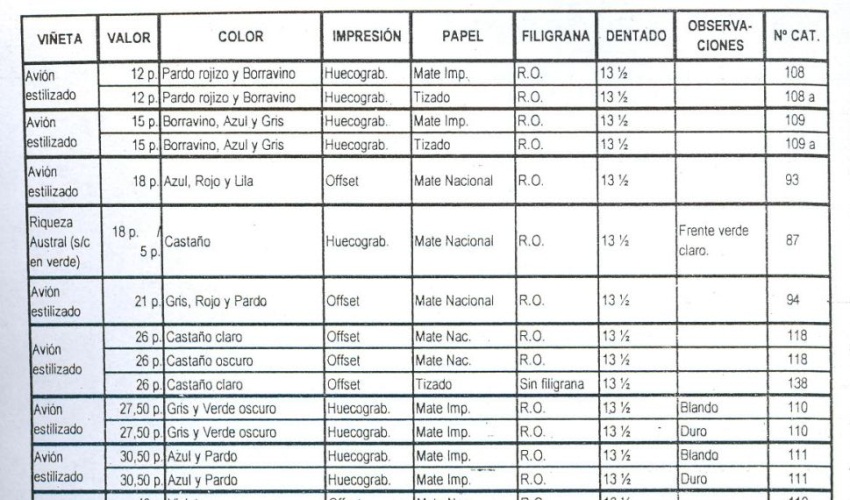
Intriguing here is his description of the German paper! Which German paper? Kupferschmidt comes very to the Mate Nacional!
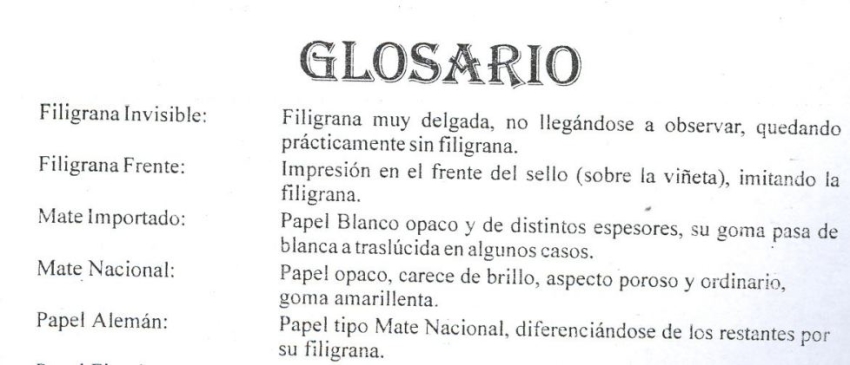
to be continued ...
Solari in his "Parece" does mention some of this Airmal series with both the type blando and the type duro: 27p50 and 30p50!
For the 12p and 15p he only sees the mate importado and the tizado (nacional). Which mate importado we are dealing with he does not mention!

Intriguing here is his description of the German paper! Which German paper? Kupferschmidt comes very to the Mate Nacional!

to be continued ...